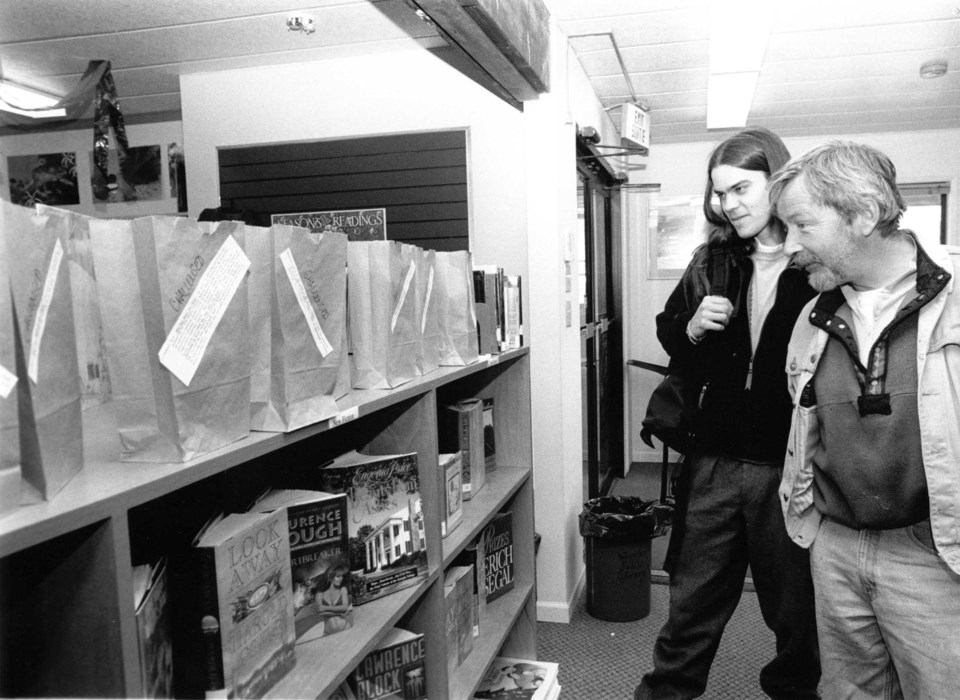When the Whistler Public Library (WPL) opened in January 1995 at its portable location on Main Street, it more than doubled its space and was able to expand its collection and services. By the end of the year, visits had also more than doubled to 50,000 and the Whistler Public Library Association (WPLA) was already looking ahead to a new location.
WPL offered patrons more than the opportunity to borrow books. The new library had two public-access computers that, for a charge, could be used for internet access and word-processing. Patrons could also take home cassettes, CDs, videos and magazines and the library continued to offer popular programs such as storytimes and summer reading club. The increased usage of the library and constantly growing collection meant that WPL grew out of its temporary space quickly.
The lot on which the library portables were placed had been set aside for parking and the library was meant to move into a permanent location by 1999. The WPLA and staff expected to stay in the portables on Main Street for only three to five years. In October 1995, WPLA board members attended a building planning workshop, followed by a community workshop in November.
Anne Townley, then the chair of the WPLA, said it was important to gather comments from community members and library patrons, as “the Whistler library should be tailored to Whistler needs.” As an example of one such need, Townley mentioned that many people lived in “cramped quarters” and may be coming to the library because they didn’t have any place at home that they could read or work quietly. At the November meeting, the WPLA was told that, to the community, the library was a space for “research, socialization, relaxation and education” and a “cornerstone of the community.”
Despite early planning, fundraising efforts and a lot of hard work, the library remained in the portables past the 1999 deadline. Plans for the building went through various changes before the groundbreaking ceremony in 2005.
In 1996, the WPLA and Whistler Museum and Archives Society formed a joint building committee and went so far as to present plans for a shared building to council before parting ways in 2003. In 1997, the WPLA voted to become a municipal library. When millennium projects were announced in 1998, the municipality chose to make the library building its project, though it was delayed until after the completion of the community project (a new Whistler Skiers’ Chapel facility) to avoid direct competition. Finally, plans were confirmed and a groundbreaking ceremony was held in June 2005.
Changes were made not only to building plans over this time, but also to the library portables. By 2000, the combination of multiple leaks and carpeted floors led to complaints from library patrons of a slight smell of mildew, though it did not stop library usage from continuing to grow. In the summer of 2001, the municipal building department added an additional layer of shelves on top of the present stacks and then added new shelves to the children’s area that winter. To hold its growing collection in preparation for a new building, the library purchased a storage container in 2002.
To familiarize the community with the new building, the building plans were painted onto the parking lot outside the portables and patrons were able to wander (or play tag) through the future spaces of the library. Delays and cost increases related to a boom in construction, however, meant that they were not able to see the physical spaces until 2008.
Jan. 6, 2008, marked the last day of library operations in the portables. On Jan. 13, patrons took part in Books on the Move, when a long line of community members moved one book each onto shelves in the new building (the rest of the books were then moved by a professional moving company). Just days before the official opening and ribbon-cutting on Jan. 26, library staff was still cataloguing and shelving books while electricians finished working around them.
Just like in 1995, library usage increased by more than 100 per cent during its first year in the new (and current) building. The library continues to grow its collection and programs each year and adapt to meet community needs.





